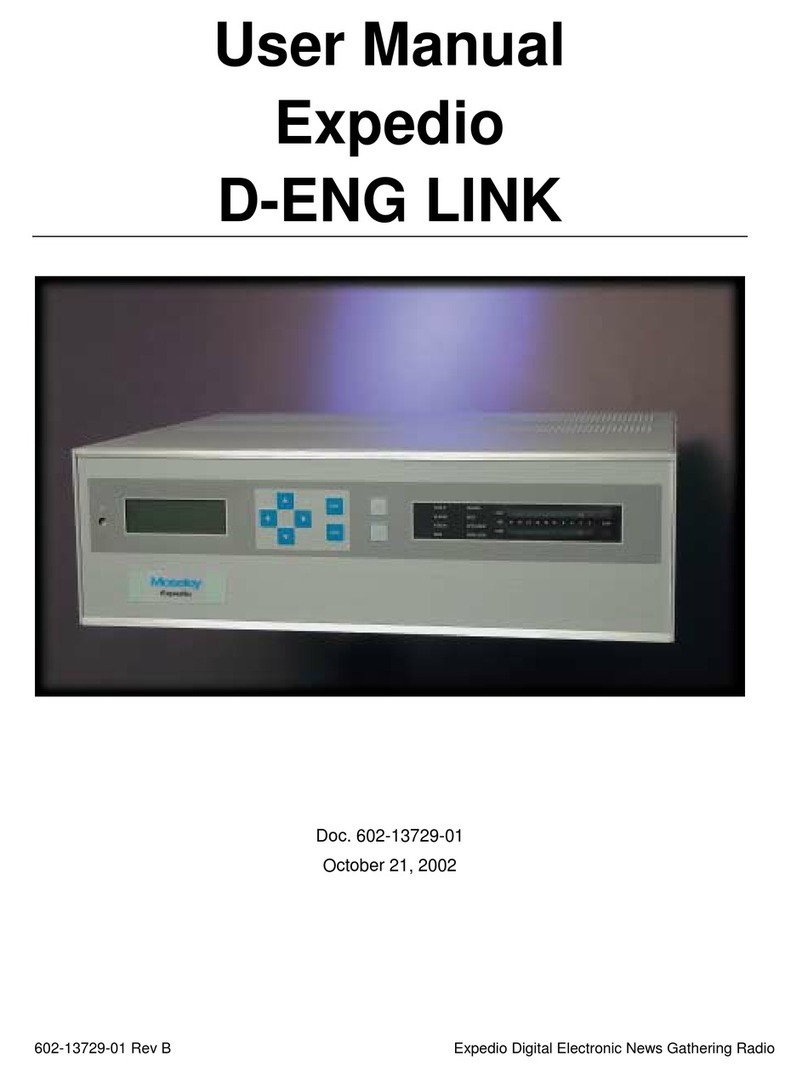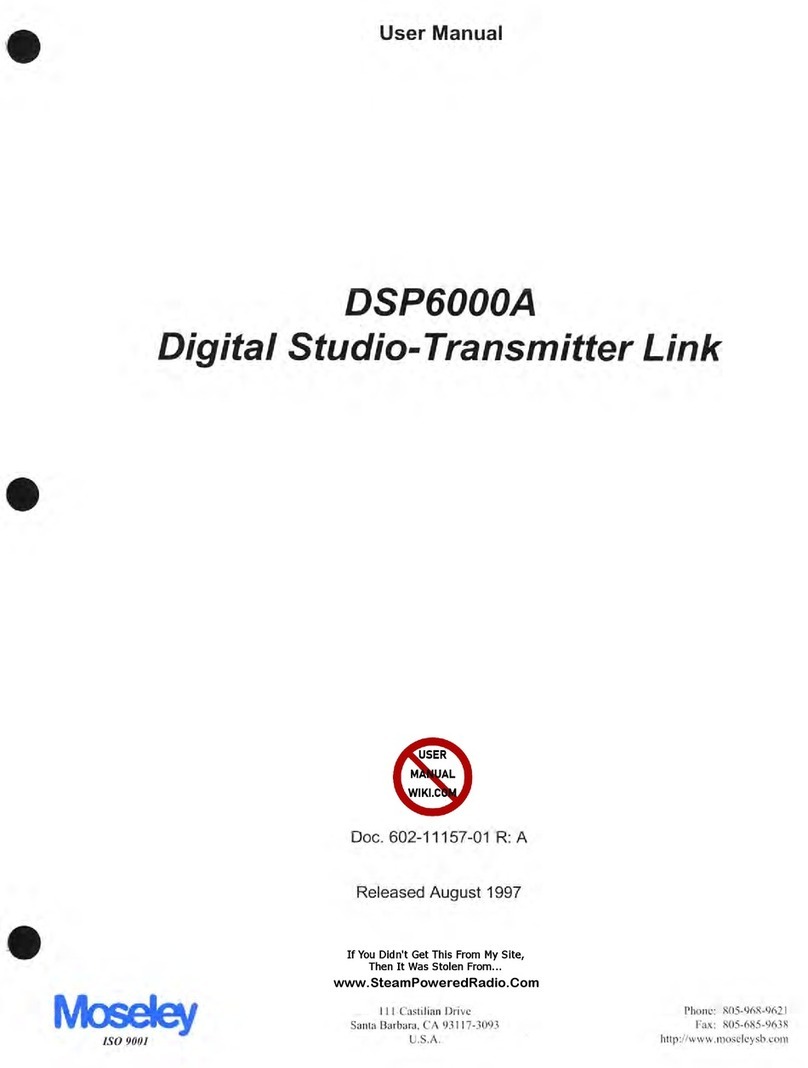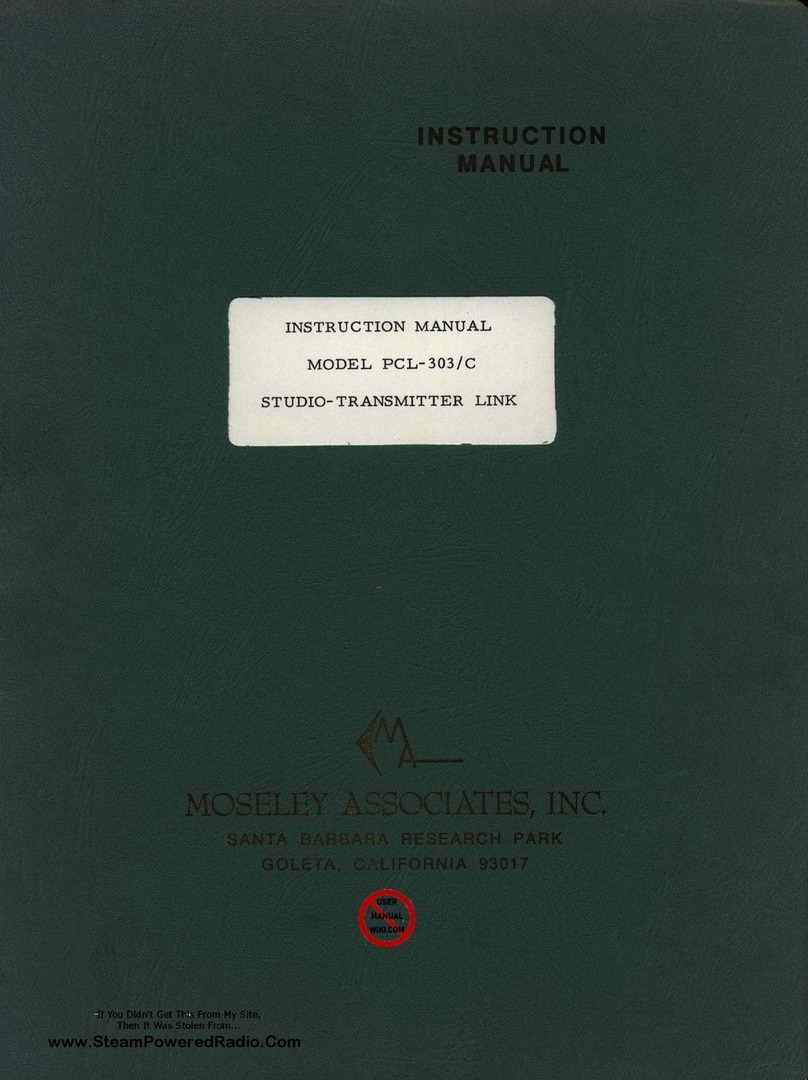
ii
Moseley SL9003Q 602-12016-01 Revision J
WARRANTY
All equipment designed and manufactured by Moseley Associates, Inc., is warranted
against defects in workmanship and material that develop under normal use within a period
of (2) years from the date of original shipment, and is also warranted to meet any
specifications represented in writing by Moseley Associates, Inc., so long as the purchaser is
not in default under his contract of purchase and subject to the following additional
conditions and limitations:
1. The sole responsibility of Moseley Associates, Inc., for any equipment not conforming to
this Warranty shall be, at its option:
A. to repair or replace such equipment or otherwise cause it to meet the represented
specifications either at the purchaser's installation or upon the return thereof f.o.b.
Santa Barbara, California, as directed by Moseley Associates, Inc.; or
B. to accept the return thereof f.o.b. Santa Barbara, California, credit the purchaser's
account for the unpaid portion, if any, of the purchase price, and refund to the
purchaser, without interest, any portion of the purchase price theretofore paid; or
C. to demonstrate that the equipment has no defect in workmanship or material and
that it meets the represented specification, in which event all expenses reasonably
incurred by Moseley Associates, Inc., in so demonstrating, including but not limited to
costs of travel to and from the purchaser's installation, and subsistence, shall be paid by
purchaser to Moseley Associates, Inc.
2. In case of any equipment thought to be defective, the purchaser shall promptly notify
Moseley Associates, Inc., in writing, giving full particulars as to the defects. Upon receipt of
such notice, Moseley Associates, Inc. will give instructions respecting the shipment of the
equipment or such other manner as it elects to service this Warranty as above provided.
3. This Warranty extends only to the original purchaser and is not assignable or
transferable, does not extend to any shipment which has been subjected to abuse, misuse,
physical damage, alteration, operation under improper conditions or improper installation,
use or maintenance, and does not extend to equipment or parts not manufactured by
Moseley Associates, Inc., and such equipment and parts are subject to only adjustments as
are available from the manufacturer thereof.
4. NO OTHER WARRANTIES, EXPRESS OR IMPLIED, SHALL BE APPLICABLE TO ANY
EQUIPMENT SOLD BY MOSELEY ASSOCIATES, INC., AND NO REPRESENTATIVE OR OTHER
PERSON IS AUTHORIZED BY MOSELEY ASSOCIATES, INC., TO ASSUME FOR IT ANY
LIABILITY OR OBLIGATION WITH RESPECT TO THE CONDITION OR PERFORMANCE OF ANY
EQUIPMENT SOLD BY IT, EXCEPT AS PROVIDED IN THIS WARRANTY. THIS WARRANTY
PROVIDES FOR THE SOLE RIGHT AND REMEDY OF THE PURCHASER AND MOSELEY
ASSOCIATES, INC. SHALL IN NO EVENT HAVE ANY LIABILITY FOR CONSEQUENTIAL
DAMAGES OR FOR LOSS, DAMAGE OR EXPENSE DIRECTLY OR INDIRECTLY ARISING FROM
THE USE OF EQUIPMENT PURCHASED FROM MOSELEY ASSOCIATES, INC.
































